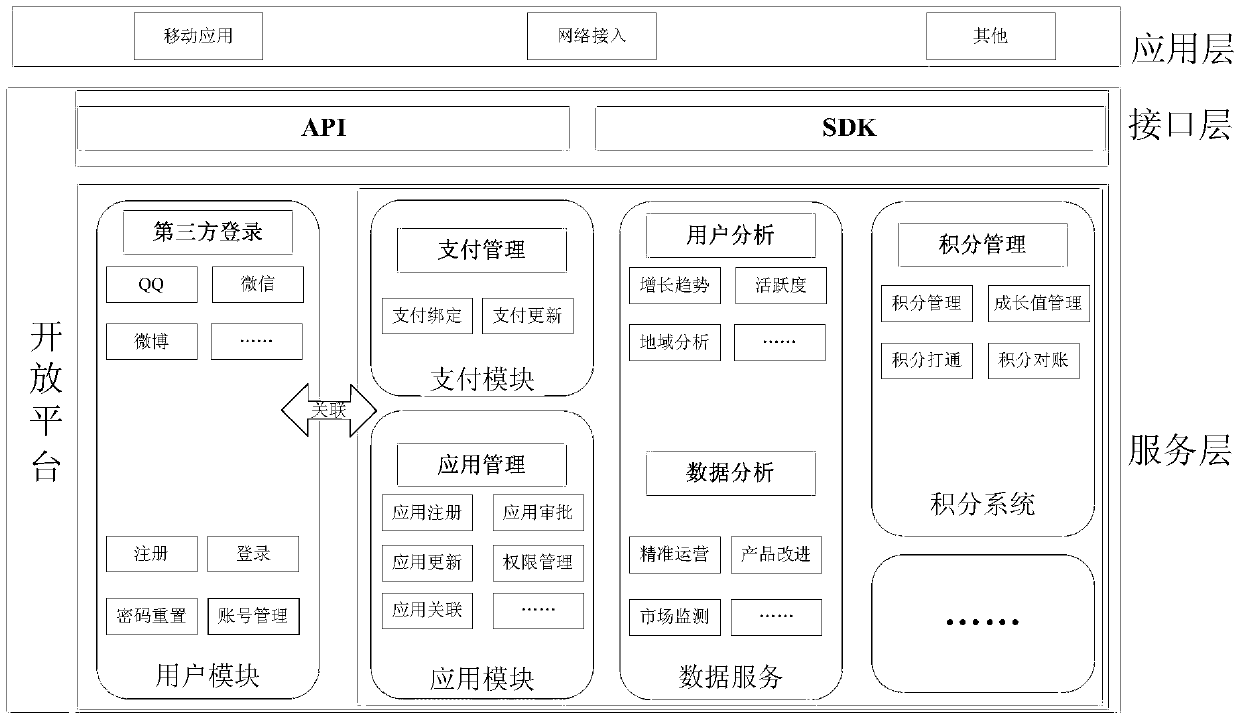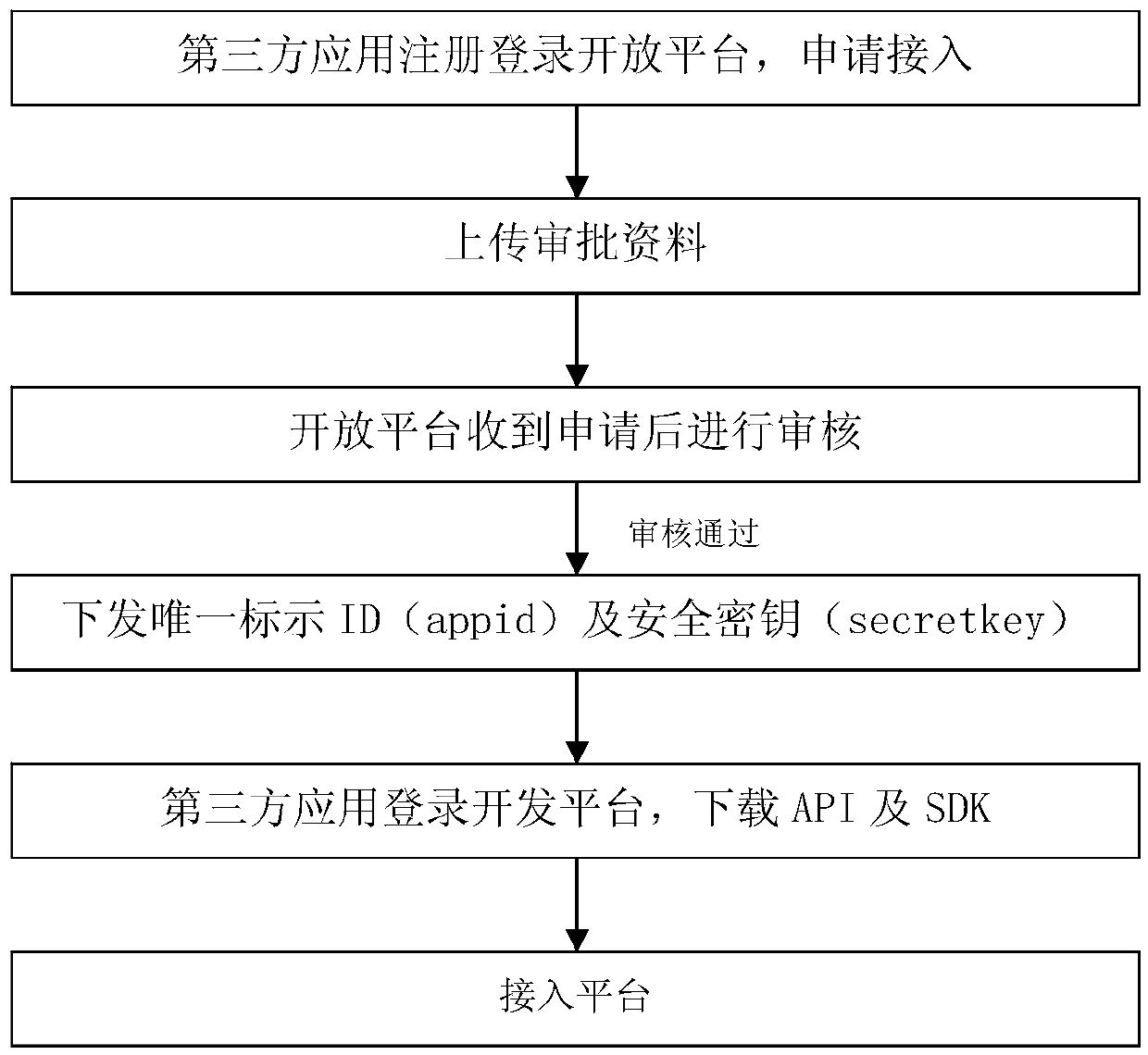Management method for unifying users by open platform and management system thereof
An open platform and management method technology, applied in the field of open platforms, can solve problems such as users forgetting their login accounts or passwords and being unable to use them, and achieve the effects of improving experience, standardizing management, and facilitating data collection
- Summary
- Abstract
- Description
- Claims
- Application Information
AI Technical Summary
Problems solved by technology
Method used
Image
Examples
Embodiment
[0051] In this example, the open platform is used to unify the user management system, such as figure 1 As shown, it is divided into three levels, namely the application layer, the interface layer and the service layer.
[0052] The application layer is a third-party application, which can be mobile applications such as QQ, WeChat, Taobao, JD, etc.; it can also be a Wbe website, such as Baidu, NetEase, etc., or other service platforms, such as Baidu Cloud.
[0053] The interface layer includes application programming interface (API) and downloading software development kit (SDK);
[0054] The service layer includes user modules, application modules, and service modules. In order to further facilitate the management of third-party applications, other service modules can also be added, such as points modules, membership level management modules, etc. These services are all in the existing technology The more common services will not be repeated in this example.
[0055] Among them, the ...
Embodiment 2
[0065] In this example, a flow chart is used to illustrate the management method of unifying users using an open platform. The flow chart is as follows: Figure 2~4 As shown, including the following steps:
[0066] Step 1. Third-party application registration and login to the open platform, apply for access, and upload approval materials.
[0067] Step 2. The open platform will review the application after receiving it. After the review is passed, the unique identification ID (appid) of the third-party application and the third-party application security key (secretkey) will be issued; the third-party application shall pass the unique identification ID (appid) and the third-party application security key (secretkey). The three-party application security key (secretkey) logs in to the open platform to view the application programming interface (API) and download the software development kit (SDK).
[0068] Step 3. Third-party applications use the application programming interface (AP...
Embodiment 3
[0075] In this example, the service product of Changhong Company is used as an example to further illustrate the present invention.
[0076] Such as Figure 5 As shown, all unified users are unified by using CID to uniquely identify a user. The column corresponding to the CID represents the channel service that has been docked with the open platform. The black part represents the user's inactive part, and the other parts indicate the service has been activated.
[0077] Connected third-party applications such as smart communities, smart medical applications, and third-party terminals such as smart TVs, smart refrigerators and other terminals. Corresponding to form a list of services activated by users, representing the actual users of the application, which are identified by openid business members. A list of services activated by a user consists of a CID and a number of openids, which represent which applications or terminal services the user has activated. The user does not have ...
PUM
 Login to View More
Login to View More Abstract
Description
Claims
Application Information
 Login to View More
Login to View More - R&D
- Intellectual Property
- Life Sciences
- Materials
- Tech Scout
- Unparalleled Data Quality
- Higher Quality Content
- 60% Fewer Hallucinations
Browse by: Latest US Patents, China's latest patents, Technical Efficacy Thesaurus, Application Domain, Technology Topic, Popular Technical Reports.
© 2025 PatSnap. All rights reserved.Legal|Privacy policy|Modern Slavery Act Transparency Statement|Sitemap|About US| Contact US: help@patsnap.com



